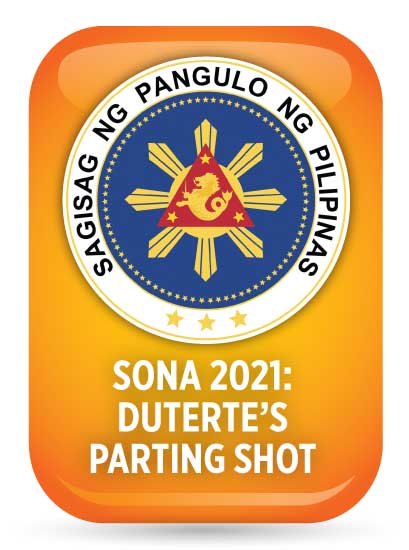By Maya M. Padillo, Correspondent
THE POSSIBILITY of President Rodrigo R. Duterte taking a historic first ride on the Mindanao train, one of the big ticket projects he listed in his first State of the Nation Address (SONA), is slim.
The 102-kilometer first segment of the railway project, which would pass through Mr. Duterte’s hometown Davao City, was approved as early as June 2017 by the National Economic and Development Authority’s Investment Coordination Committee. It was set for a two-year construction starting 2018.
But finalizing the track’s alignment and settling right of way, particularly in Davao City being the most urbanized area in the route, have proven to be the biggest hurdle to what could have been the jewel of the Duterte administration in Mindanao.
As things stand, the target completion of just the site acquisition for the China-funded project is on Dec. 2021, said Christense Denise Geonzon, public communications officer for the Mindanao Railway-Project Management Office, during a forum in late-March.
But local business leaders are not making a big fuss over such showpiece.
They still see the overall infrastructure program — with roads, irrigation systems, and renovated airports, among others — as the biggest achievement of the Duterte government, along with the investor interest in Mindanao that he fostered.
“There is more optimism now among the people of Mindanao of greater things to come but temporarily halted by the pandemic,” Philippine Chamber of Commerce and Industry-Southeastern Mindanao Regional Governor Arturo M. Milan said.
Vicente T. Lao, chairman of the Mindanao Business Council, said he wants to see continued infrastructure development and enhanced policies to attract more foreign investments in the south as the country slowly tries to recover from the coronavirus crisis.
“I hope he will be able to convince the next president of the Philippines to maintain the momentum for growth in Mindanao. He was able to improve the share of Mindanao in terms of the benefits it’s receiving from the national government,” Mr. Lao said.
In the last State of the Nation Address on July 26, Mr. Milan said he hopes to hear the President outline concrete plans on addressing the health crisis and reopening the economy.
“For me, these are the two more pressing issues confronting us,” Mr. Milan said.
“When I say COVID-19 (coronavirus disease 2019) and the re-opening of the economy, include financial assistance to those affected by the pandemic like ayuda (financial assistance) to micro, small, and medium enterprises, overseas Filipino workers, and those who lost their jobs,” he said.
The youth, especially in restive parts of Mindanao where the pandemic’s disruption has further complicated efforts to address lingering peace and security issues, needs assurance and direction towards a better quality of life in the foreseeable future.
Kier S. Aventurado, program coordinator for the European Union-funded Extremely Together-Philippines under the Kofi Annan Foundation that aims to prevent violent extremism, said economic recovery and education are key areas that the administration should focus on during its last year.
“The State of the Nation Address is a major occasion where the President has the eyes and ears of the nation all to himself,” he said, “What I want is for the President to tell us how he will get us out of this economic crisis, and address the issues of unemployment and education, especially among the youth.” — with Marifi S. Jara

